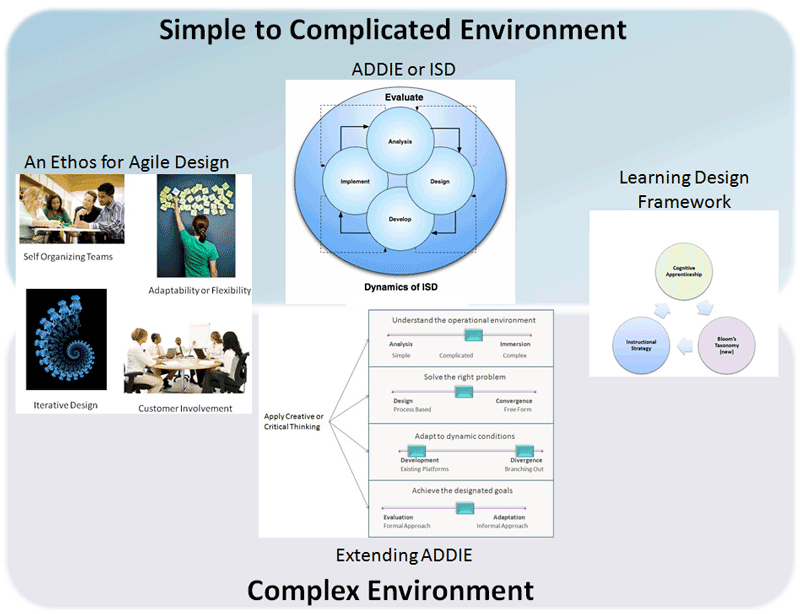Blended Learning
While the concept of blended learning has probably been around for ages, the term was not coined until the late nineties. One of the earliest references to the term is a press release on March 5, 1999 by Interactive Learning Centers when it announces a name change to EPIC Learning. The article reads in part, “The Company currently operates 220 on-line courses, but will begin offering its Internet courseware using the company's Blended Learning methodology.”
Because elearning did not turn out to be the silver bullet that many of its proponents were harkening it to be, they needed another silver bullet to add to it, thus the concept of blended learning. In its early stages, blended learning meant the mix of classroom (brick) and e-learning (click). However, most are are now taking a broader view in that it goes beyond elearning and classrooms: Blended learning is a mix of delivery methods that have been selected and fashioned to accommodate the various learning needs of a diverse audience in a variety of subjects. This method can include any combination of any of the above delivery methods (McSporran & King 2002).
One study showed that classrooms actually enhance elearning in that a blended learning environment increase learning by an average of 11% for both procedural and declarative knowledge (Sitzmann, Ely, 2009). There seems to be something almost magical about blending the interactive and social nature of classrooms with the self-paced environment of elearning as each can deliver specific methodologies better than the other. In addition, elearning can have a attrition or drop-out rate as high as 20% as it often treats the person as a lone learner. But by adding a blended learning solution that is aimed at social interactions provides the social context that we need when it comes to learning so that it does not become a lone-learning environment.
Next Steps
Reference
McSporran, M. & King, C. (2005). Blended Is Better: Choosing Educational Delivery Methods. Retrieved October 21, 2007 from http://hyperdisc.unitec.ac.nz/research/KingMcsporranEdmedia2005.pdf
Sitzmann, T. & Ely, K. (2009). Web-Based Instruction: Design and Technical Issues which Influence Training Effectiveness. Retrieved Nov, 2, 2009: http://webboard.adlnet.org/Technologies/Evaluation/Library/Additional%20Resources/Presentations/ASTD%202009%20Presentation%20Slides.pdf


